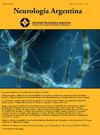轻度认知障碍患者随访研究中痴呆进展的临床和神经心理学预测因素
Q4 Medicine
引用次数: 0
摘要
几项研究将轻度认知障碍(MCI)的进展与老年、血管疾病、认知和功能缺陷等危险因素联系起来,强调健忘症亚型更容易转化。发展为痴呆症的年发病率从10%到25%不等。目的本研究探讨MCI发展为痴呆的临床和神经心理学预测因素,并区分失忆症和多结构域亚型。研究对象和方法纳入170例60岁以上有认知障碍的患者,通过神经心理学测试进行评估,包括记忆、注意力、执行功能、语言、视觉空间技能以及功能和认知储备量表。对92例患者进行MRI扫描以评估血管损伤。结果样本平均年龄77.94岁,文化程度11.20年。170例患者中,140例(82.35%)被诊断为轻度认知障碍。在24个月内,44.28%的MCI患者进展为痴呆,其中遗忘亚型进展最大。重要的预测因素是记忆测试和复杂功能的表现,以及血管危险因素的存在。主要危险因素为高血压(60.89%)、血脂异常(51.98%)和吸烟(49.29%)。结论:每种MCI亚型都有特定的认知预测因子,强调了复杂功能缺陷作为痴呆进展的可能指标的相关性。强调了系统随访神经心理学评估的必要性和指导患者预防措施的重要性。本文章由计算机程序翻译,如有差异,请以英文原文为准。
Predictores clínicos y neuropsicológicos de progresión a demencia en un estudio de seguimiento de una población de pacientes con deterioro cognitivo leve
Introduction
Several studies relate the progression of mild cognitive impairment (MCI) to dementia with risk factors such as advanced age, vascular disorders, and cognitive and functional deficits, highlighting that the amnesic subtype is more prone to conversion. Annual rates of progression to dementia range from 10% to 25%.
Objective
This study examines the clinical and neuropsychological predictors of the progression of MCI to dementia, differentiating between the amnesic and multidomain subtypes.
Subjects and method
170 patients over 60 years of age with cognitive complaints were included, evaluated with neuropsychological tests that included memory, attention, executive functions, language, visuospatial skills and functional and cognitive reserve scales. MRI scans were performed on 92 patients to assess vascular damage.
Results
The sample had a mean age of 77.94 years and an education of 11.20 years. Of the 170 patients, 140 (82.35%) were diagnosed with MCI. In 24 months, 44.28% of patients with MCI progressed to dementia, with the amnesic subtype being the one with the greatest progression. Significant predictors were performance on memory tests and complex functionality, as well as the presence of vascular risk factors. The main risk factors were hypertension (60.89%), dyslipidemia (51.98%), and smoking (49.29%).
Conclusions
Specific cognitive predictors were identified for each subtype of MCI, underlining the relevance of deficit in complex functionality as a possible indicator of progression to dementia. The need for systematized follow-up neuropsychological evaluations and the importance of guiding patients on preventive measures are emphasized.
求助全文
通过发布文献求助,成功后即可免费获取论文全文。
去求助
来源期刊

Neurologia Argentina
Medicine-Neurology (clinical)
CiteScore
0.50
自引率
0.00%
发文量
34
期刊介绍:
Neurología Argentina es la publicación oficial de la Sociedad Neurológica Argentina. Todos los artículos, publicados en español, son sometidos a un proceso de revisión sobre ciego por pares con la finalidad de ofrecer información original, relevante y de alta calidad que abarca todos los aspectos de la Neurología y la Neurociencia.
 求助内容:
求助内容: 应助结果提醒方式:
应助结果提醒方式:


